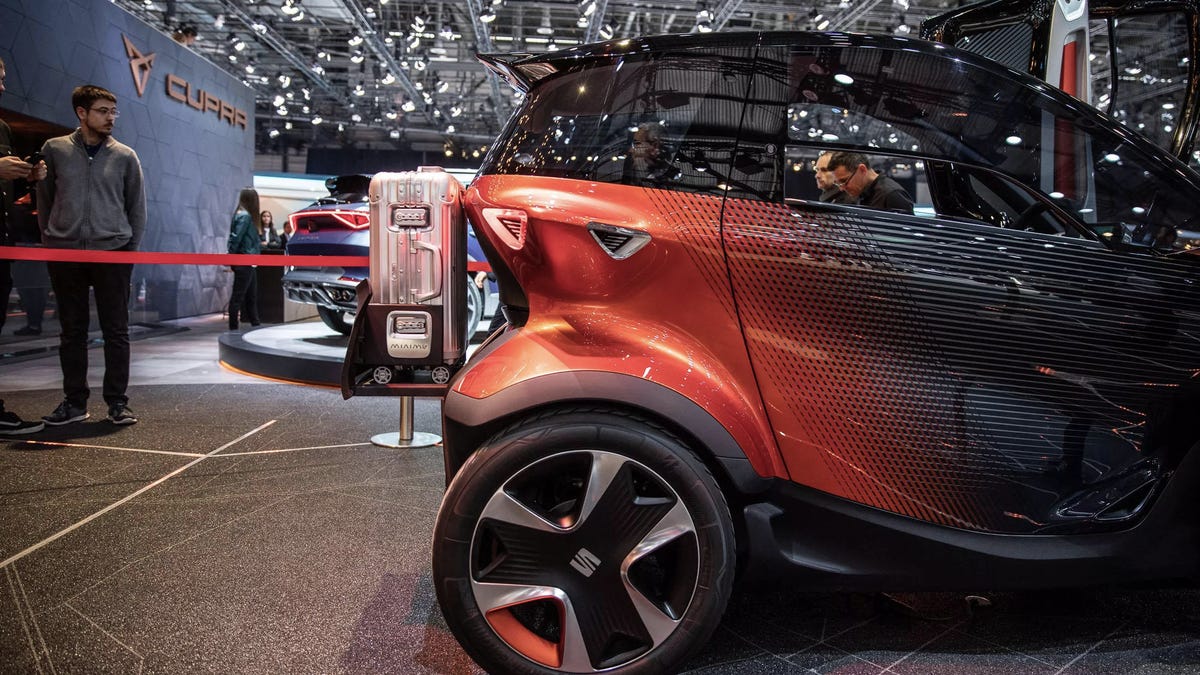Seat Minimó concept brings a twee electric car to Geneva
It has a hot-swappable battery and is ideal for getting around town.

As cars become rolling platforms of technology, we're starting to see them pop up in odd places. CES is now practically its own auto show, and recently, VW Group's Spanish division Seat unveiled a concept car at MWC , the world's biggest phone show, in its hometown Barcelona. But now, it's made its way to the Geneva Motor Show.
To be fair, the Seat Minimó concept is only barely a car. Seat actually refers to it as a quadricycle, taking some aspects of cars and blending them with some aspects of motorcycles. It's a tiny little guy, with enough space for two people and little else. If you want to bring a passenger and a suitcase, you'll have to stow the suitcase out back, exposed to the elements.
As for the interior, it's on the minimalist side. The doors are hinged to make it possible for you to get in and out in tight spaces, and the front seat slides forward to offer passenger access. The dashboard is straightforward, with your standard steering wheel and brakes, in addition to a gauge cluster screen that appears to double as an infotainment system.
It's like a Renault Twizy, but way less dorky.
That small footprint may not help with hauling, but since this concept is built for urbanites, its tiny dimensions should leave it well suited to handle tight corners and busy streets. It also happens to be electric, which means it'll be no problem in European city centers that have implemented diesel bans or congestion charges for gas guzzlers.
The Minimó concept is designed not to be owned, but to be shared -- it's not something Seat envisions living in your driveway. Instead, it will be out and about all day, lending itself to urbanites in need of a ride. To that end, it'll keep downtime to a minimum thanks to a hot-swappable battery that slides out from underneath the body. Seat estimates this could reduce car-sharing operation costs by some 50 percent, since there'll be little if any downtime. Its battery is small, but since everything is small, range clocks in at a decent 62 miles.
Other bits of the concept's tech are also aimed at the mobility market. There's no physical key -- access is found digitally, using a smart device. That same device can bring navigation into the car by way of wireless Android Auto. The concept relies on human drivers, but it could theoretically be outfitted to run autonomously, becoming even more efficient by minimizing the time it spends idle.

